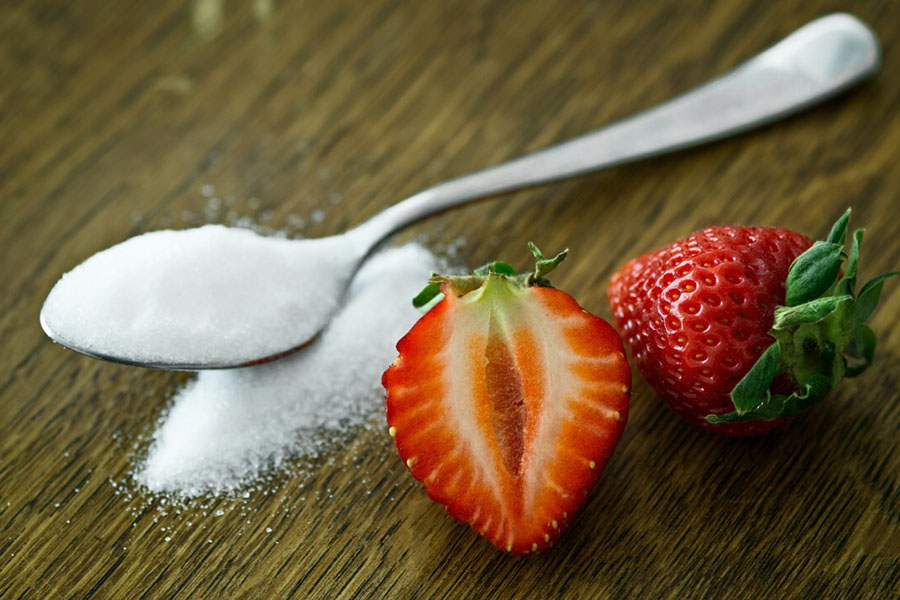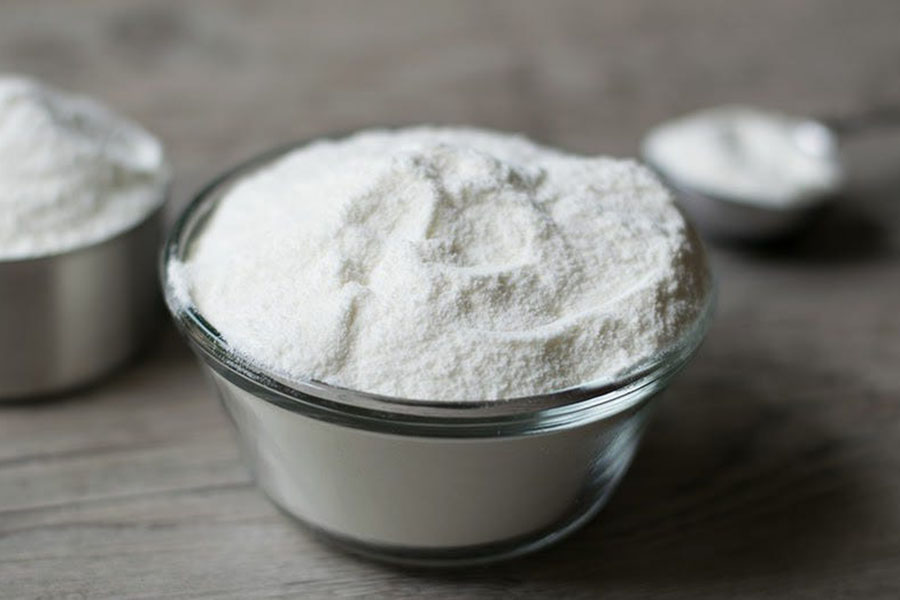Polydextrose is a synthetic polysaccharide used as a dietary fiber in food products. Developed in the 1960s, it enhances texture, reduces calories, and provides health benefits like improved digestion and blood sugar control.

Importance and Applications of Polydextrose
Polydextrose is a versatile dietary fiber with significant health benefits and diverse applications in the food industry, enhancing both nutritional value and product quality.
Importance
- Dietary Fiber Source: Polydextrose provides a high dietary fiber content, essential for supporting digestive health.
- Caloric Reduction: It helps in reducing the caloric content of food products, making them suitable for weight management.
- Low Glycemic Index: Polydextrose’s low glycemic index helps regulate blood sugar levels, providing benefits for individuals, particularly those with diabetes.
- Prebiotic Benefits: Polydextrose promotes the growth of beneficial bacteria in the gut, thereby improving overall gastrointestinal health.
- Functional Ingredient: Polydextrose enhances the texture, mouthfeel, and stability of foods, thereby improving their overall quality.
Applications
- Sugar Substitutes: Used in sugar-free and reduced-sugar products such as candies, baked goods, and beverages.
- Low-Calorie Foods: Incorporated in low-calorie snacks, desserts, and diet beverages to reduce overall caloric intake.
- Fiber-Enriched Foods: Added to cereals, nutrition bars, and meal replacement products to boost dietary fiber content.
- Fat Replacers: It is used in low-fat and fat-free products to replicate the texture and mouthfeel of fat, without contributing additional calories.
- Baked Goods: Enhances the moisture retention and shelf-life of baked items like bread, muffins, and cookies.
- Dairy Products: It is incorporated into yogurt, ice cream, and other dairy desserts to enhance texture and increase fiber content.
- Beverages: Added to functional beverages, including energy drinks and meal replacement shakes, to provide fiber and improve consistency.
Chemical Structure and Properties of Polydextrose
Polydextrose is a synthetic polymer of glucose, consisting of randomly bonded glucose units, typically through α- and β-(1→6) linkages. Its structure also includes minor amounts of sorbitol and citric acid, which help to control the polymerization process and provide stability.
Key Properties:
- Solubility: Polydextrose is easily soluble in water, making it simple to incorporate into various food products.
- Low Viscosity: It has a low viscosity, even at high concentrations, which does not significantly alter the texture of foods.
- Caloric Value: It provides only 1 kcal per gram, significantly lower than regular carbohydrates, aiding in calorie reduction.
- Stability: It is stable under a wide range of pH and temperatures, ensuring consistent performance during food processing.
- Prebiotic Effects: Polydextrose functions as a prebiotic, promoting the proliferation of beneficial bacteria within the gut.
These properties make polydextrose an excellent ingredient for enhancing dietary fiber content, reducing calories, and improving the texture and stability of various food products.
Production and Manufacturing Process of Polydextrose

Polydextrose is produced through a controlled polymerization process involving glucose, sorbitol, and citric acid. The process begins by melting glucose, which is then combined with sorbitol and a small amount of citric acid. This mixture is heated under vacuum conditions to initiate polymerization, forming polydextrose. After polymerization, the resulting polymer undergoes neutralization, purification, and drying processes to produce the final product.
Raw Materials Used in Production
- Glucose
- Sorbitol
- Citric Acid
Synthesis Process
- Melting and mixing of glucose with sorbitol and citric acid
- Heating under vacuum to initiate polymerization
- Neutralization and purification of the polymer
- Drying and final processing
Quality Control and Standards
- Monitoring of polymerization conditions
- Ensuring purity and consistency of the final product
- Adherence to food safety and industry standards
Health Benefits of Polydextrose
Polydextrose provides numerous health benefits, mainly because of its high fiber content and prebiotic properties. It:
- Promotes Digestive Health: Enhances bowel regularity and aids in digestion.
- Aids in Weight Management: Induces a feeling of fullness while contributing minimal calories.
- Improves Blood Sugar Control: A low glycemic index aids in managing blood sugar levels.
- Supports Gut Health: Functions as a prebiotic, encouraging the growth of beneficial gut bacteria.
- Reduces Caloric Intake: Provides bulk and texture in foods with minimal calories.
Applications in the Food and Beverage Industry
Polydextrose is widely employed in the food and beverage sector because of its functional attributes and health advantages. It is commonly used in:
- Sugar Reduction: Substituting sugar in various products like beverages, confectioneries, and baked goods.
- Calorie Reduction: Formulating low-calorie and diet foods without compromising taste or texture.
- Texture Enhancement: Improving the mouthfeel and stability in processed foods such as dairy products, dressings, and sauces.
- Fiber Enrichment: Adding dietary fiber to cereals, bars, and snacks to boost their nutritional value.
- Fat Replacement: Mimicking the texture and creaminess of fats in low-fat and fat-free products like ice creams and spreads.
Polydextrose’s versatility makes it an ideal ingredient for developing healthier food options while maintaining product quality and consumer appeal.
Side Effects of Polydextrose
- Flatulence and bloating in some individuals
- Potential laxative effect, especially with high intake
- Allergic reactions in sensitive individuals
Conclusion
Polydextrose emerges as a valuable ingredient in the food industry, offering multifaceted benefits from calorie reduction to fiber enrichment. Its versatility and functional properties play a crucial role in creating healthier food options while maintaining taste and texture.
As consumer demand for nutritious and low-calorie foods grows, polydextrose is poised to play a pivotal role in meeting these expectations. Continued research and innovation in its application will further expand its potential in enhancing the nutritional profile and overall quality of food products.
